
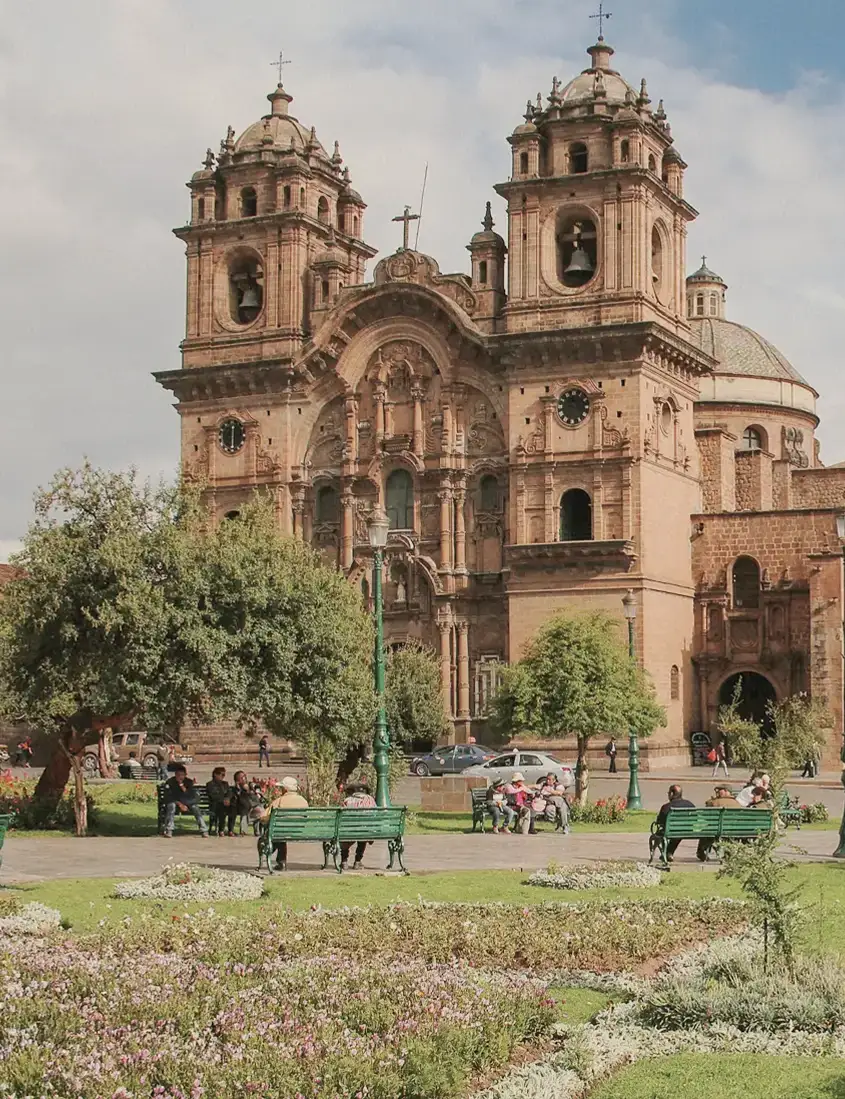





 5 Stars - Based on 552 Client
Reviews
5 Stars - Based on 552 Client
Reviews

At Cusco Native, we ensure the best prices by operating locally without intermediaries. You can’t find the same itinerary with identical services at a lower price elsewhere.

Reserve your adventure with just a 25% deposit and pay the rest upon arrival in Peru. Postpone your trip for free up to 30 days before the start date!

Local Business

Sustainable

Small Groups

Experienced Team


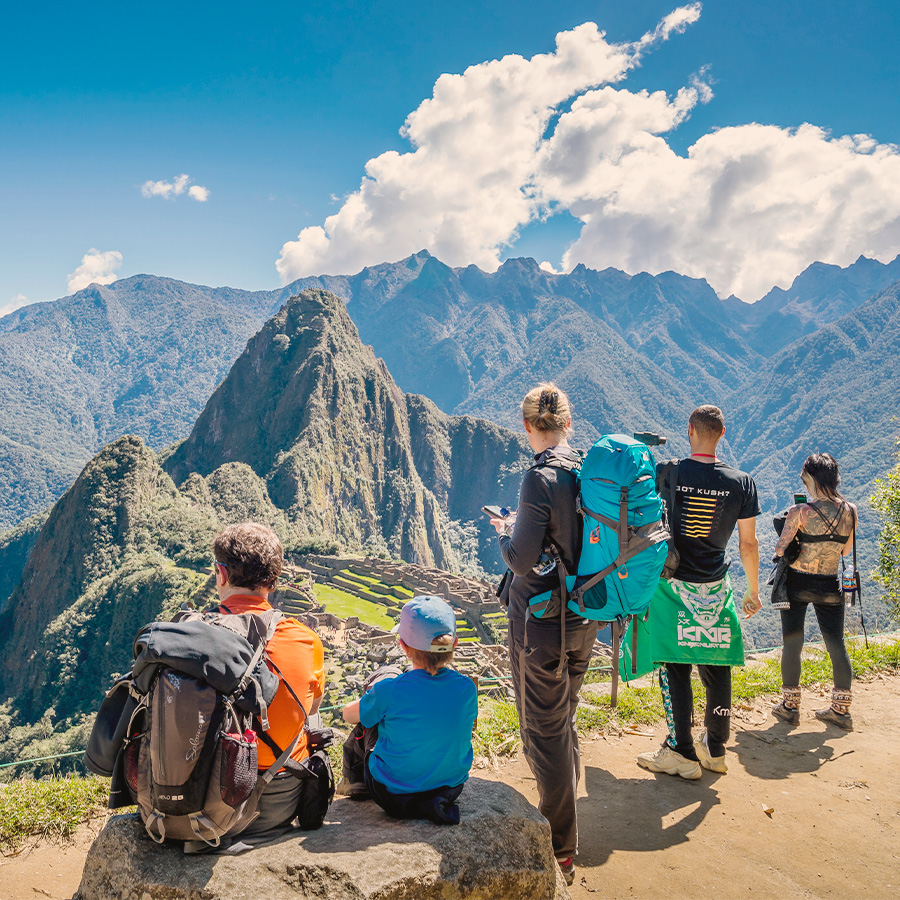
Didn't find the tour you were looking for? Don't worry! We are experts at building custom tours and treks in Cusco and throughout Peru. Just contact us, tell us about the tour you'd like and let us do the rest..
Cusco is located in the Southeastern portion of Peru and is the namesake and capital of the Cusco Region. Cusco’s population of approximately 430,000 — only seventh most in Peru — gives it a vibrant, living feel but allows it to maintain a cozier charm than an overcrowded metropolis. Though it lies near the Urubamba Valley, its position in the heights of the Andes at an elevation of 11,200 ft (3,400 m) ranks it among the highest cities in the world. Cusco lies within a cornucopia of natural resources from fertile lands for farming and agriculture to grand repositories of granite, gold, silver and salt. Fresh mountain springs, aquifers and complex river systems ensure the crucial availability of water, though its subtropical highland climate is often arid. Yet, it is important to note that, due to great variation in the terrain of the Andes, Cusco and its surrounds undergo many microclimates and are prone to drastic shifts in temperature at certain times of year.

Cusco experiences two main seasons throughout the year: the dry season and the rainy season. The periods between tend to be a gradual transition.
• Dry Season in Cusco is during the winter months of June-August. Visitors can expect beautiful, sunny days that tend to be warm, with an average daytime temperature of 65°F (18°C). However, nights can drop to chilling temperatures averaging only 25°F (4°C).
• Cusco’s rainy season corresponds to South America’s summer months (December-March) and provides a stabler range of middling temperatures. Cooler, cloudy days hover around 60°F (16°C) and, due to the insulation provided by cloud cover and atmospheric moisture, nights average 46°F (8°C). During rainy season, one can expect daily rain showers and sporadic heavy thunderstorms, but the times between rainfall are often punctuated by sunshine through the patchy clouds.
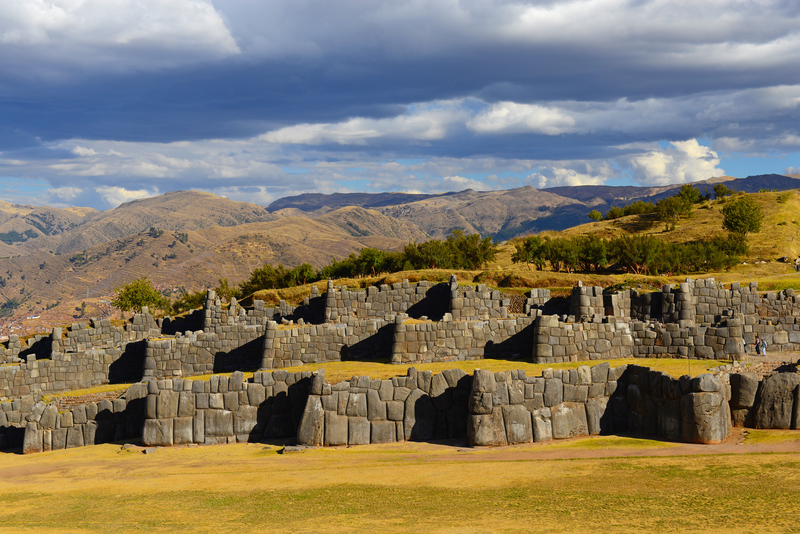
Dry season is the most popular tourist period in Cusco, due to the consistent dry weather and the fact that it corresponds to summer in the Northern Hemisphere. But while inclement weather is not a factor, large crowds and booked-out destinations may be. Rainy season presents the advantage of being far less crowded, and the pleasant temperatures attract some travelers; but weather can be a real factor. Road closures can make travel difficult and some excursions may be postponed due to weather. While Machu Picchu and most of the other attractions remain open throughout the year, the Inca Trail is closed during the month of February for maintenance. The transition periods in between the rainy and dry seasons — April to May and September to October — offer more temperate, predictable weather and moderate crowds.
Cusco, honored as the heart of the vast Empire of the Incas, and later functioning as the epicenter of Colonial Spain’s hold and influence on the Andes region of South America, had already been an important nexus for numerous Indigenous Andean peoples for centuries. Around 1200 CE, a city-state corresponding to Cusco was established by Manco Capac, remembered as the first Inca King, marking the beginning of over three centuries of Inca rule (though it would be more than 200 years until the Inca Empire began its era of expansion). In 1438, Pachacuti Inca Yupanqui, the Earth-Shaker, oversaw the initial stages of imperial growth. The Inca Empire would expand greatly over the next century. Significant portions of South America’s entire Pacific Coast came under the political, religious and cultural control of the Incas, whose influence emanated from the imperial capital Cusco. Evidence of how important Cusco was to the Inca rulers is seen in the city’s very bones: Old Cusco was built in the shape of a puma — an animal held sacred by the Inca and other Indigenous cultures — under order of Pachacuti. Numerous opulent palaces, mansions and plazas were built in the city as the empire’s territory and resources expanded. This legacy is still observed today in the neat, straight lines and precise angles of central Cusco’s cobblestone streets and its masterful stone foundations. It was to this grand imperial capital that the first Spaniards arrived in 1533. Although certainly awestruck by the magnificent city, Francisco Pizarro wasted no time in conquering and sacking Cusco upon his arrival a few months later. For nearly three centuries following its fall as imperial capital of the Inca, Cusco would remain the epicenter of Spanish colonization and Christianization of the Andean region, enjoying much success due to its rich agriculture and farming, mining and trade with Spain.
While Cusco is “base camp” for anyone visiting Machu Picchu and the nearby Sacred Valley, it is undoubtedly a worthy destination in its own right. Many of the amazing sites listed here are included with the Cusco Tourist Ticket (Boleto Turístico del Cusco) and are conveniently close to one another. Here are the most essential places to visit on your trip to Cusco:
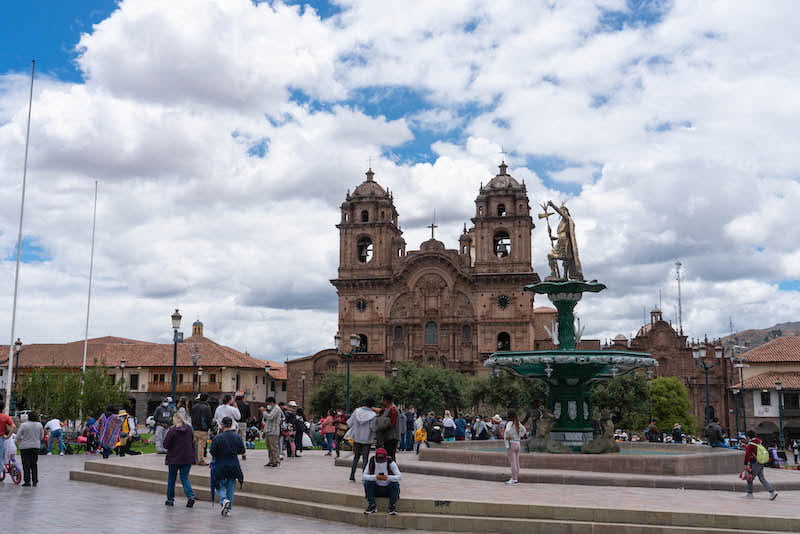
The heart of the Puma, this central square has a long history as an important site in Cusco. Known to the Inca as Huacaypata, the square of the warrior, it features numerous iconic churches, alongside bars and restaurants. It is the perfect place to people-watch, relax and acclimate upon arrival to Cusco.
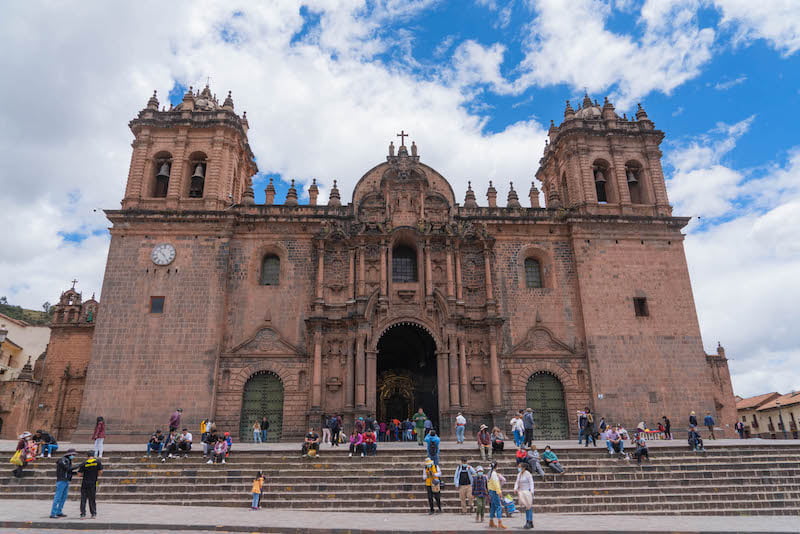
This iconic church, a UNESCO World Heritage site located on the Plaza de Armas, was constructed mostly from stones taken from the Inca palace it supplanted and from nearby Sacsayhuaman. It contains many works of religious art representative of the striking Cusco School, including a depiction of the Last Supper featuring the traditional Peruvian dish of cuy (guinea pig).
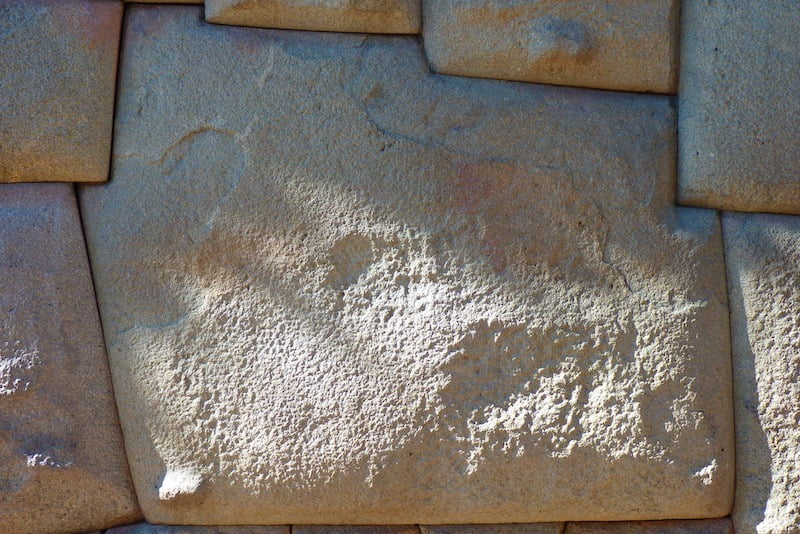
The impressive avenue Hatun Rumiyoq, meaning “the one with the big stone,” runs from the Plaza de Armas to San Blas and is closely walled in by the impressive stone foundations (once of the palace of Inca Roca), showcasing the astounding engineering and precision masonry of the Incas, including the iconic cultural heritage object, the twelve-angled stone.
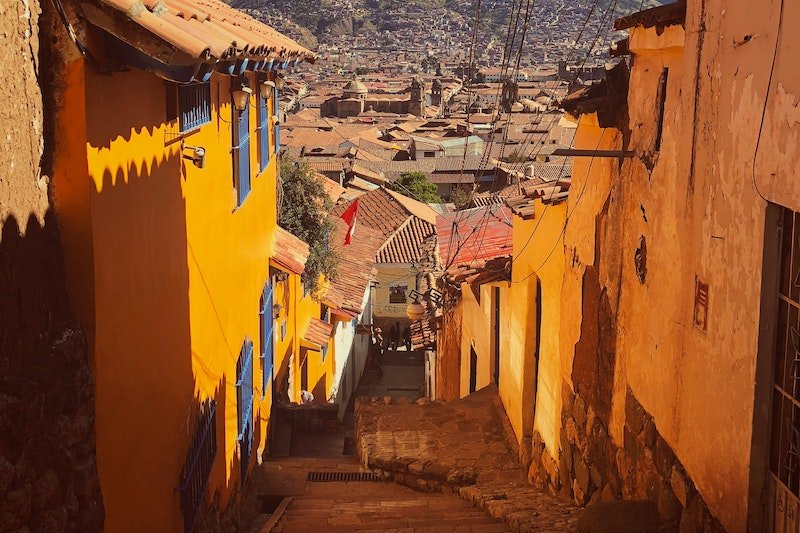
The San Blas neighborhood is a charming, picturesque area full of whitewashed adobe houses, and features the oldest parish church in Peru (built 1563). Known as a haven for artists and artisans since Inca times, it is replete with all manner of artisan workshops and storefronts displaying incredible, skillful, handmade wares.
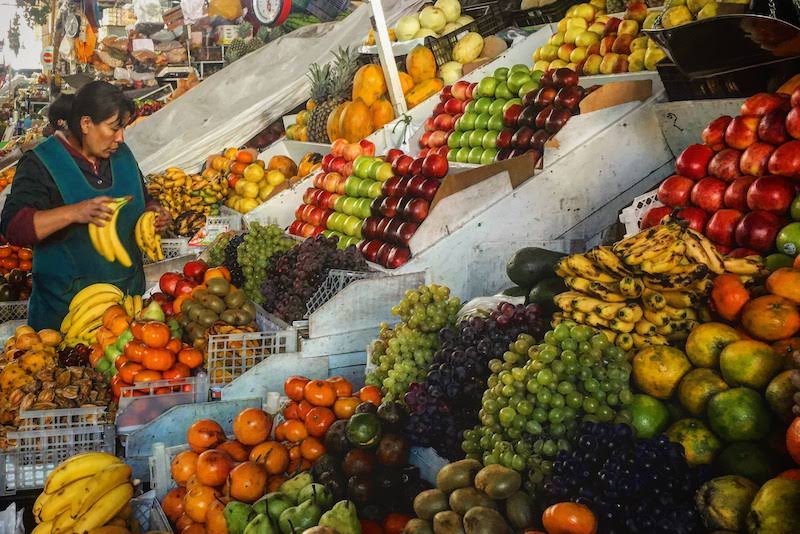
The San Pedro market is Cusco’s emblematic local market, full of everyday staples like fresh fruit and vegetables, wheels of cheese, food kiosks, and knit alpaca sweaters and hats, as well as plenty of more esoteric oddities such as love potions, aphrodisiacs, and spells.
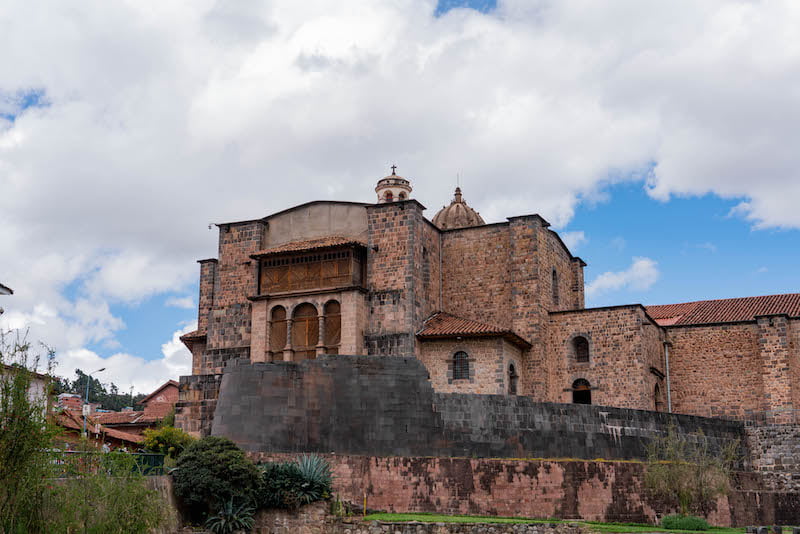
Qorikancha (Coricancha) was the site of the Temple of the Sun, an opulent compound dedicated to Inti, the Sun God. which was said to have been almost completely covered in layers of gold and gemstones when the Spaniards arrived. Today, its surviving foundation, upon which was built the Convent of Santo Domingo, can still be seen.
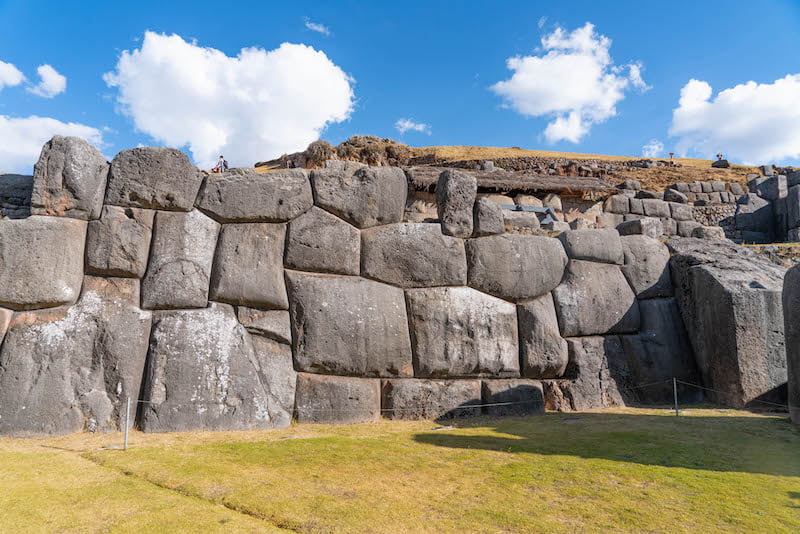
Once an important ritual gathering place and citadel for Inca royalty, the extensive ruins of the “head of the puma” look down on Cusco from above. Its three famous terraced, zig-zagging walls — today only a fraction of their peak size — feature the ingenious interlocking dry-stone masonry of the Incas. Only a 5-minute walk away from the Cristo Blanco lookout.
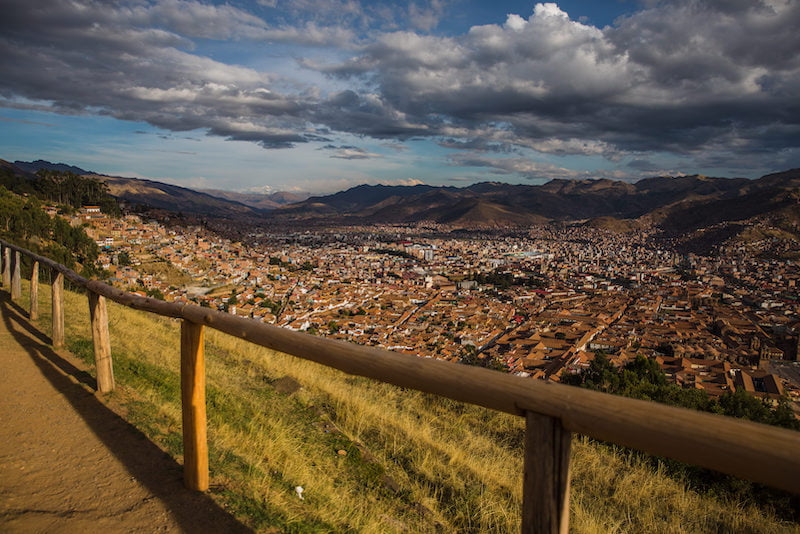
A short stroll out from Sacsayhuaman is a captivating double feature: Cristo Blanco and one of the best miradors of Cusco. Cristo Blanco, the 26-foot White Christ statue, recalls Rio de Janeiro’s Christ the Redeemer, with its arms spread, overlooking the city. Appropriately, the adjoining lookout point provides one of the best possible views of Cusco.
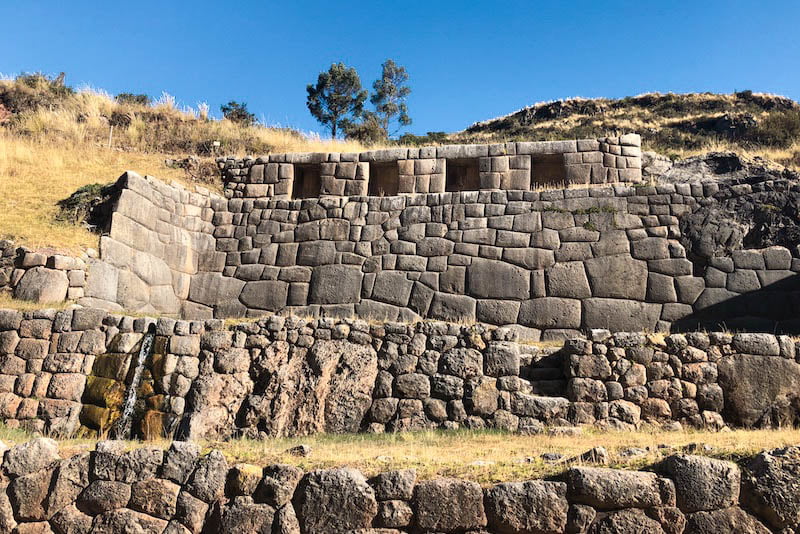
A few kilometers outside Cusco proper and next to Puka Pukara are the wonderfully engineered Inca Baths at Tambomachay. The baths, built around 1500 CE, are composed of four hillside terraces in which carved stone channels bring crisp, cold underground springwater down to two diverging streams and finally into a stone basin.
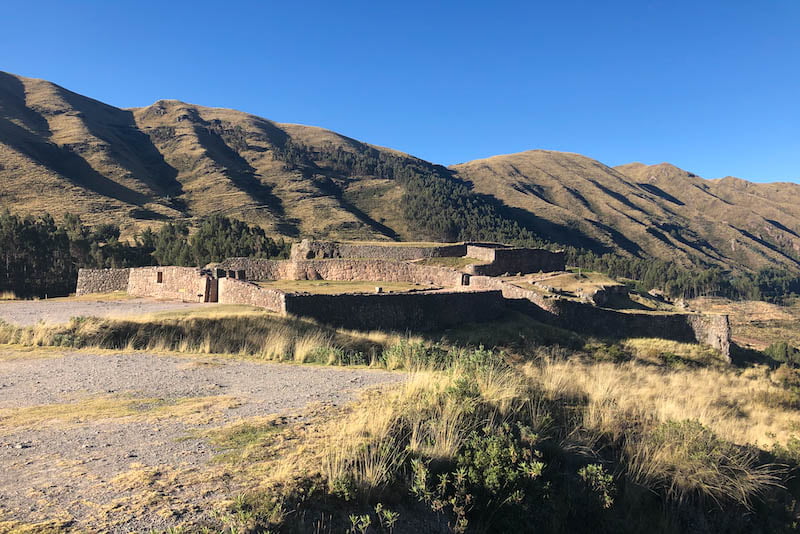
These monumental military ruins, adjacent to the Inca Baths, are called the Red Fort because the dry-stone (without mortar) walls take on a pinkish-red hue in the setting sun. The excellent vantage point at this location also lends a splendid view of the surrounding rugged landscape.

Qenko is one of the clearest and most extensive examples of a huaca, a holy place usually based around a naturally-occurring rock formation. Qenko is a cave-like edifice whose walls have been smoothed, polished, and carved, which was purportedly used for many rituals, including sacrifices and mummifications.
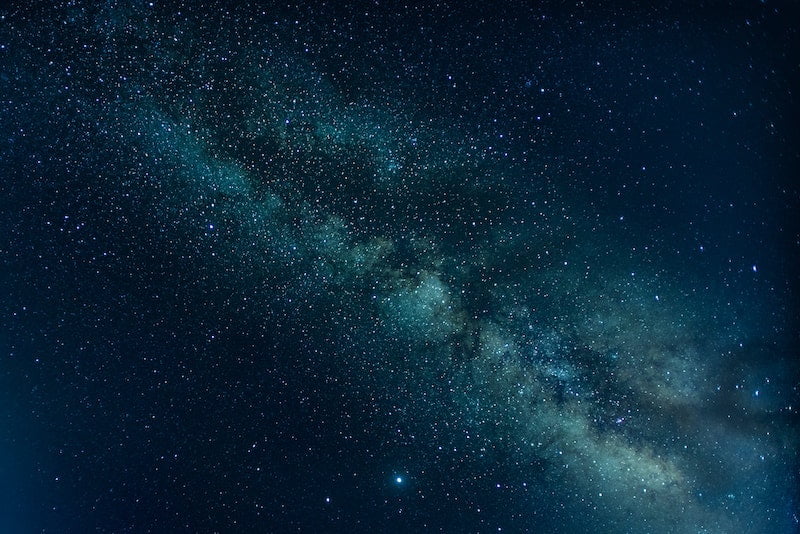
Only 15 minutes outside of Cusco city, the Cusco Planetarium provides equally epic sights in the night sky. The qualified experts at this family-friendly establishment offer not just direct observation of stars and stellar objects by telescope, but share important knowledge about the Inca’s deep reverence for astronomy.
Cusco boasts many prestigious museums chock-full of breathtaking artifacts, works of art and artisan crafts, and information about the many cultural, archeological and historical threads woven through the city and region. Some of the most exemplary are:
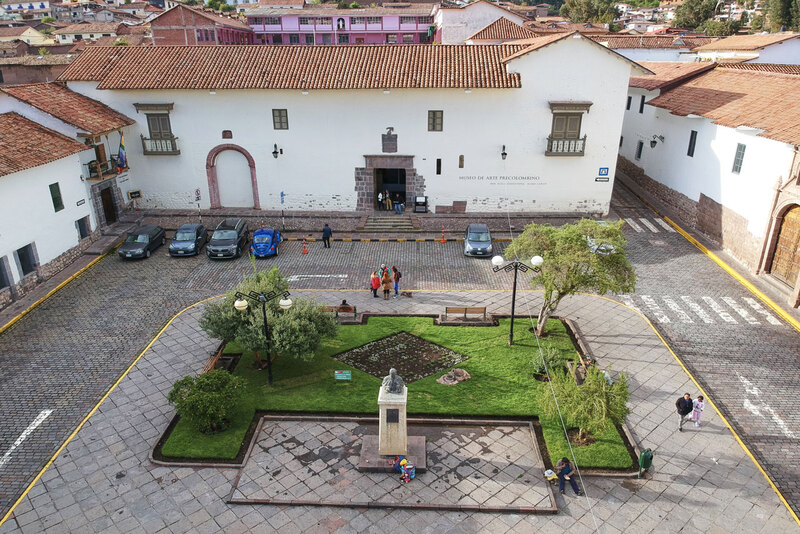
• Museum of Pre-Columbian Art El Museo de Arte Precolombino exhibits an astounding collection of nearly 400 pieces of art and craftsmanship from the Inca and numerous other pre-Hispanic Indigenous cultures from across three thousand years of Peruvian history.
• Casa Concha (Machu Picchu Museum) Housed in a colonial dwelling just off the Plaza de Armas, Casa Concha displays many archeological finds, as well as photos and videos of excavations, including over 360 pieces repatriated from the University of Yale in 2010.
• Museo Inka In the center of Cusco lies this enthralling collection of Inca cultural artifacts including jewelry, pottery, textiles and mummies. Other fascinating exhibitions teach about pre-Incan cultures and the importance of the local geography and climate.
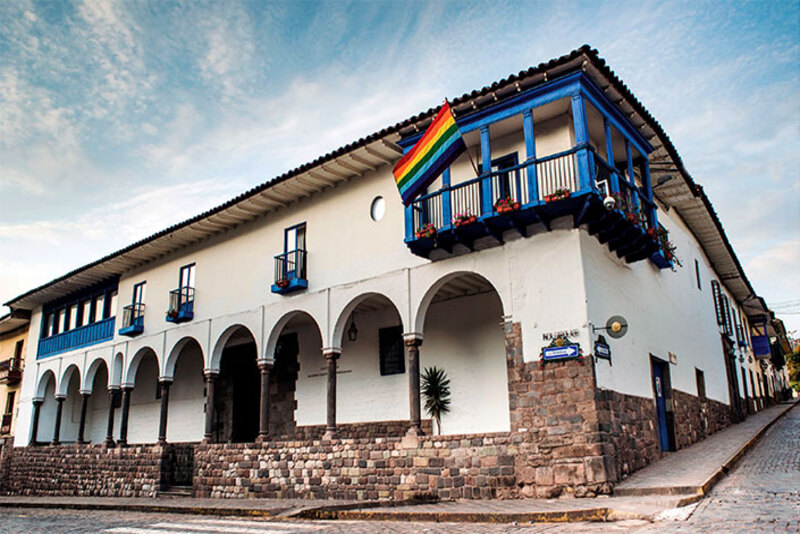
• Museo Histórico Regional de Cuzco Located in the colonial casona of writer, historian and Cusco native Inca Garcilaso de la Vega Chimpu Ocllo, this museum edifies and informs with many Incan excavated finds and pieces of art, as well as Jesuit religious paintings and sculptures.
• Centro de Textiles Tradicionales del Cuzco The Center of the Traditional Textiles of Cusco is a craft workshop that offers textile-making demonstrations and workshops and offers many colorful fabrics and textile products for sale.
• ChocoMuseo The Cacao and Chocolate Museum has three sites in the city of Cusco, including its own chocolate factory, museums with fascinating insights into the history and cultural significance of cacao and chocolate, as well as, of course, opportunities to try the delicious traditions. Also available through this kid-friendly institution are excursions to their chocolate plantations.
Cusco offers a plethora of fascinating cultural events and festivals for visitors to enjoy. Here are a few of the most significant:
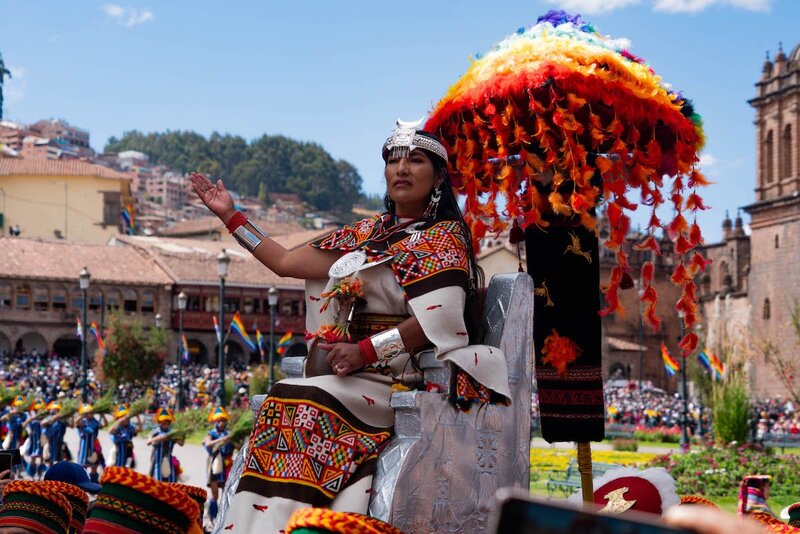
• New Years (Dec 31 – Jan 1) An exciting, energetic gathering the the Plaza de Armas featuring midnight fireworks and ensuing music, dancing and partying.
• Cusco Carnaval (40 days before Easter, moveable dates) This period of lighthearted and mischievous celebration begins with a wide-ranging water fight on the first Sunday, kicking off a week of colorful, flavorful festivities.
• Semana Santa (Easter Week, moveable dates) Cusco fills with crowds during important Holy Week celebrations, which feature an archetypical mixture of Andean and Catholic elements. It begins with the procession for Taytacha Temblores, “Lord of the Earthquakes,” an icon and patron of Cusco.
• Qoyllur Rit’i (Ascension Day, moveable dates) Numerous processions of patron saints and manifestations of the Virgin Mary from all corners of Cusco converge on the Plaza de Armas, where upwards of 50,000 people gather to observe at this important festival emblematic of Andean religious syncretism (the blending of Catholic and pre-Columbian Indigenous religious traditions and symbols).
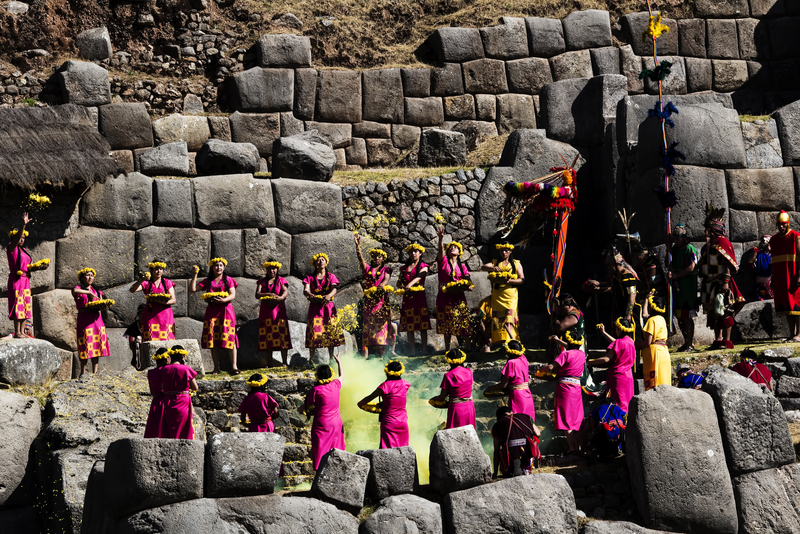
• Corpus Christi (Nine week after Easter Thursday, moveable dates) Numerous processions of patron saints and manifestations of the Virgin Mary from all corners of Cusco converge on the Plaza de Armas, where upwards of 50,000 people gather to observe at this important festival emblematic of Andean religious syncretism (the blending of Catholic and pre-Columbian Indigenous religious traditions and symbols).
• Inti Raymi (June 24) This celebration of Inti, the Inca sun god, originally a celebration of the winter solstice and Inca new year, fittingly begins at Qorikancha, continues to the Plaza de Armas and famously culminates at Sacsayhuaman. It is a great place to observe colorful traditional garb, including the famous aya huma mask.
• Peruvian Independence Day (July 28) Peru’s instantly-recognizable red-and-white flag flutters all around during this patriotic communal celebration. Visitors can prepare to observe many parades, dances and fireworks displays.
• Santuranticuy Fair (December 24) This fair, taking place annually on Christmas Eve, brings hundreds of artisans and visitors alike to the Plaza de Armas, where handmade crafts of tin, silver, embroidered fabrics, and more, are bought and sold for the traditional Nativity displays seen at Cusqueño churches, businesses and homes.

Cusco is the best place in Peru to try traditional Andean cuisine. Here you will have the opportunity to try a series of unique local dishes that use fruits and vegetables native to the region. For a true local experience, you can head to the food stalls in the San Pedro market and try some traditional foods at bargain prices. For a more complete restaurant experience, we recommend the following excellent options:
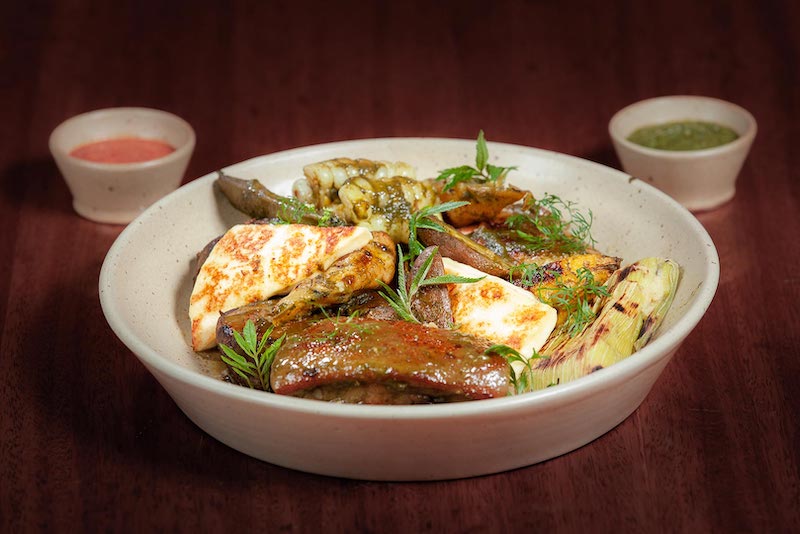
The signature restaurant of Gaston Acurio, Peru’s famous celebrity chef, this upscale dining experience features many traditional Andean dishes with a special menu section dedicated to Cusqueño dishes.
Plaza Regocijo 261, 2do piso, Cusco
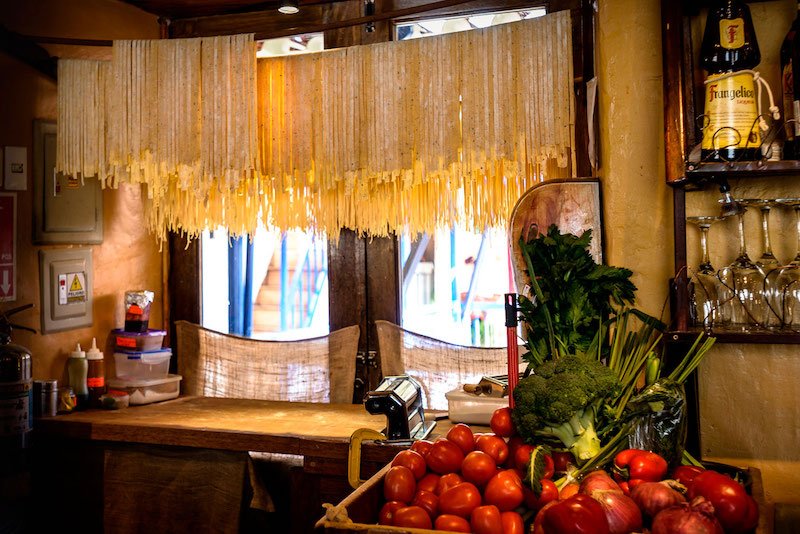
The signature restaurant of Gaston Acurio, Peru’s famous celebrity chef, this upscale dining experience features many traditional Andean dishes with a special menu section dedicated to Cusqueño dishes.
Plaza Regocijo 261, 2do piso, Cusco

Offering hearty traditional Peruvian dishes such as aji de gallina, this cozy and rustic spot in San Blas includes a courtyard with wood-fired ovens for pizzas and calzones.
Plazoleta San Blas 120, Cusco
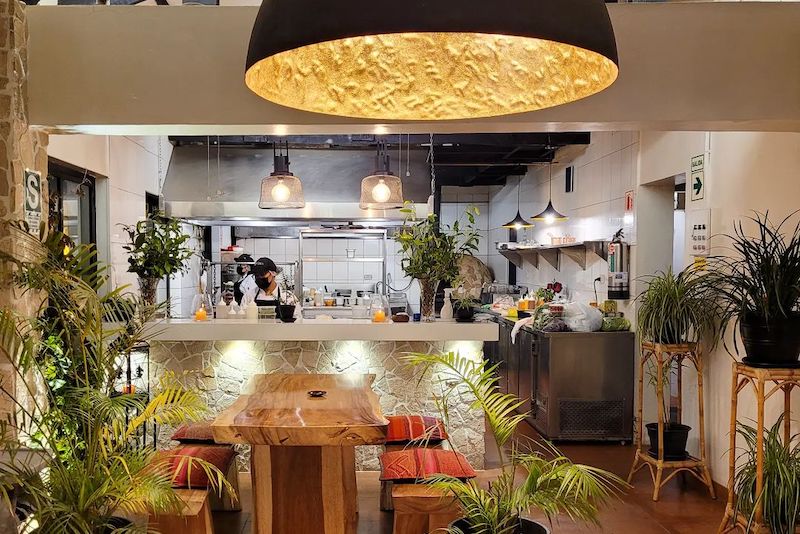
This bright, modern restaurant in the center of town offers traditional meals fused with modern twists in a casual, contemporary environment.
Procuradores 320, Cusco
Make sure to follow these important tips on your trip to Cusco. If you have any questions about planning your trip, don’t hesitate to reach out to our team with any questions!
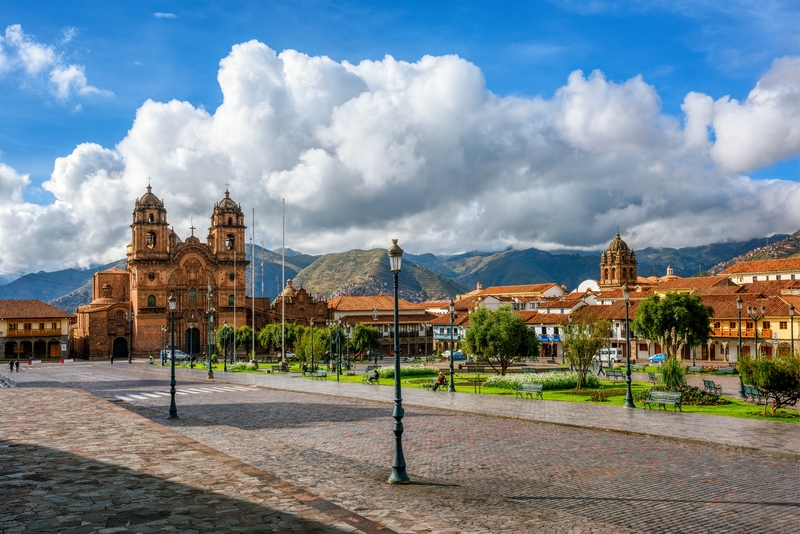
Altitude sickness is a common concern for visitors to Cusco. While most people experience mild symptoms such as headache, fatigue, dizziness, and loss of appetite that tend to clear up in 24-48 hours, altitude sickness does affect each individual uniquely and acclimation varies. Here are some tips for adapting to the altitude during the first couple days of your trip:
• Eat light meals. The digestive system works slower at higher altitudes.
• Try not to exert yourself too much. Just relax and try to take it easy as much as possible.
• Make sure to stay hydrated.
• Avoid alcohol.
• Take advantage of some of the natural altitude sickness cures available in Peru such as coca or muña tea. Note: avoid drinking coca tea too late in the day, which can cause trouble sleeping.
• Take medication if necessary. Acetazolamide and other medication for soroche (the word for altitude sickness) are available over the counter in Peru.
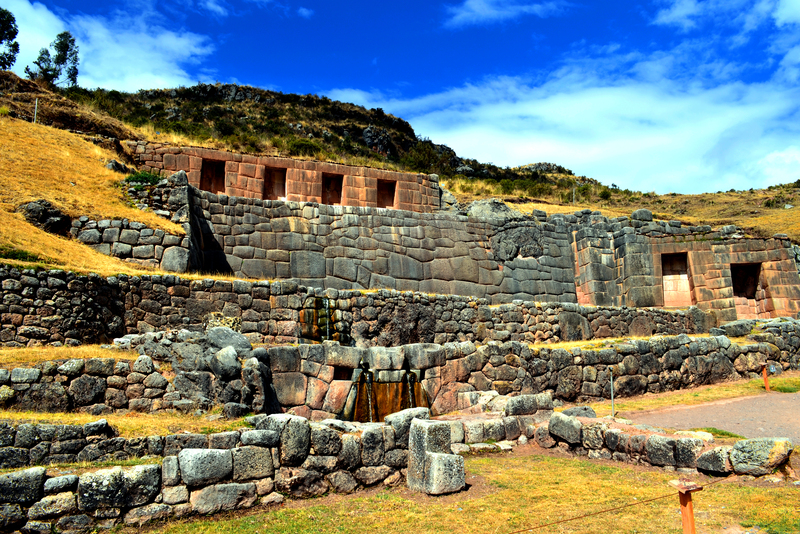
Cusco is known for its fluctuating temperatures, strong sunshine and intermittent rainfall. Essential year-round items for your trip to Cusco include:
• Light sweaters or jackets
• Sturdy, comfortable shoes or boots
• Sunglasses and/or protective hat
• Sunblock (SPF 35 or higher recommended)
• Umbrella, raincoat or rain poncho
• Good quality hiking shoes or boots
• Waterproof hiking pants
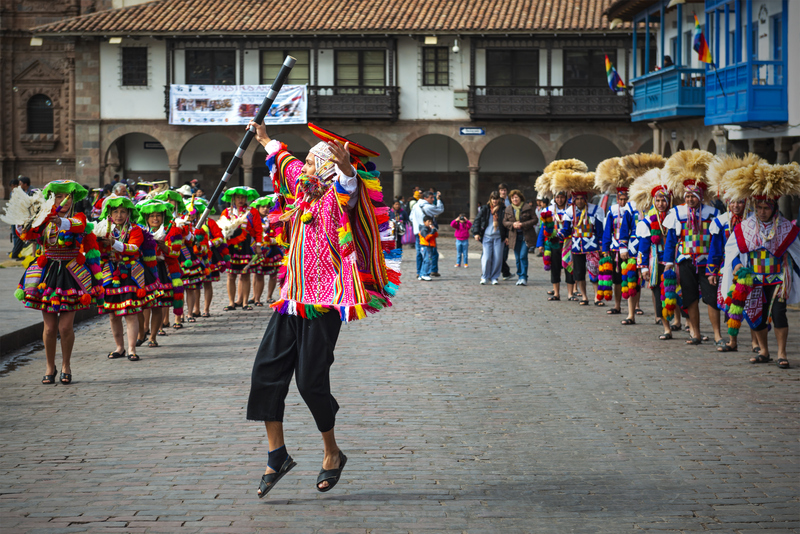
The peak season of June through August requires planning ahead as many destinations sell out or book up weeks or even months in advance. Visitors should consider checking availability for hotels, flights, trains (to and from Machu Picchu and other sites), Inca Trail permits, etc., when planning their trip. Planning ahead for rainy season means confirming that destinations affected by the weather are open for business and potentially accommodating extra time in your itinerary for postponed or rescheduled excursions. Don’t hesitate to contact us for further guidance — we can help with your Cusco travel plans!
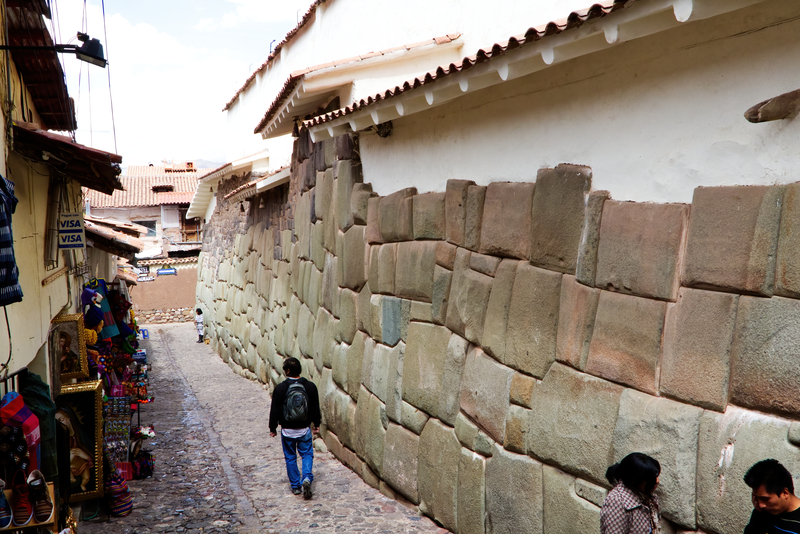
Much of Cusco is easily walkable for the average visitor, with areas near the historic center being relatively flat and providing easy, convenient access to many of Cusco’s most attractive sites. However, heading north to San Blas, the streets begin a rather steep uphill climb which may be prohibitive to some travelers, especially if recently arrived.

Discover our latest blogs
Here are the answers to some of the most frequently asked questions about traveling to Cusco:
Altitude sickness, also called Acute Mountain Sickness (AMS), is a valid consideration and precautions should always be taken. Most visitors acclimate within 24-48 hours without incident, but this can vary widely. Age, sex and physical fitness are generally not considered determining factors, but consult with your physician before traveling if desired, especially if you are pregnant, have a history of heart conditions or are flying in from a very low altitude.
You should plan on spending at least two full days in Cusco if you want to get a good feel for all it has to offer. Besides this, for most visitors the first 24 hours are spent doing lowkey activities like walking around the historic center while acclimating to the elevation. A couple days can easily be spent exploring Old Cusco and sites of interest within walking distance.
Most people arrive by national flight from Lima to Alejandro Velasco Astete International Airport (CUZ), a short distance outside Cusco proper. Direct international flights are rare but can be booked from Santiago de Chile. While the flight from Lima takes only about 55 minutes, the same journey by bus takes over 20 hours due to the rugged terrain of the Andes.
Machu Picchu is about 4 hours by train from Cusco. The train departs from Poroy Station, a 20-minute drive from Plaza de Armas, and arrives at Aguas Calientes Station near the ruins. Machu Picchu can also be reached by completing a 4-day hike along the Inca Trail. The Sacred Valley is about an hour away from Cusco by car.
Cusco is considered a very safe city, one of the safest in Peru. Nevertheless, opportunistic crimes such as muggings and thefts can occur, as anywhere, and appropriate, common-sense precautions should be taken to avoid drawing unnecessary attention.
Exchanging your foreign currency for Peruvian soles can be accomplished with ease once in Cusco. Numerous exchange spots are conveniently located around the old center of town and some hotels also offer their guests exchange services. Money can also be exchanged at Cusco’s airport. Check with your bank for possible options on international banking and local withdrawal from US accounts.
The Cusco Tourist Ticket (Boleto Turístico del Cusco or BTC) is issued by local and regional government authorities to control and protect the invaluable heritage sites in and around Cusco. You will need one to enter most all ruins and archeological sites. But no worries! The BTC can easily be acquired in Cusco once here. We also offer the BTC as part of various tour and excursion packages we have: see _____ or contact us directly!
In the vast majority of cases you can get along in Cusco just fine speaking English. Most hotels, restaurants, museums, tours and excursions (including us at Cusco Native!) and many shops have fully bilingual staff. Even so, brushing up on some basic Spanish and perhaps carrying a traveler’s phrase book are never bad ideas, especially if you plan to do more shopping and exploring local markets and shops.
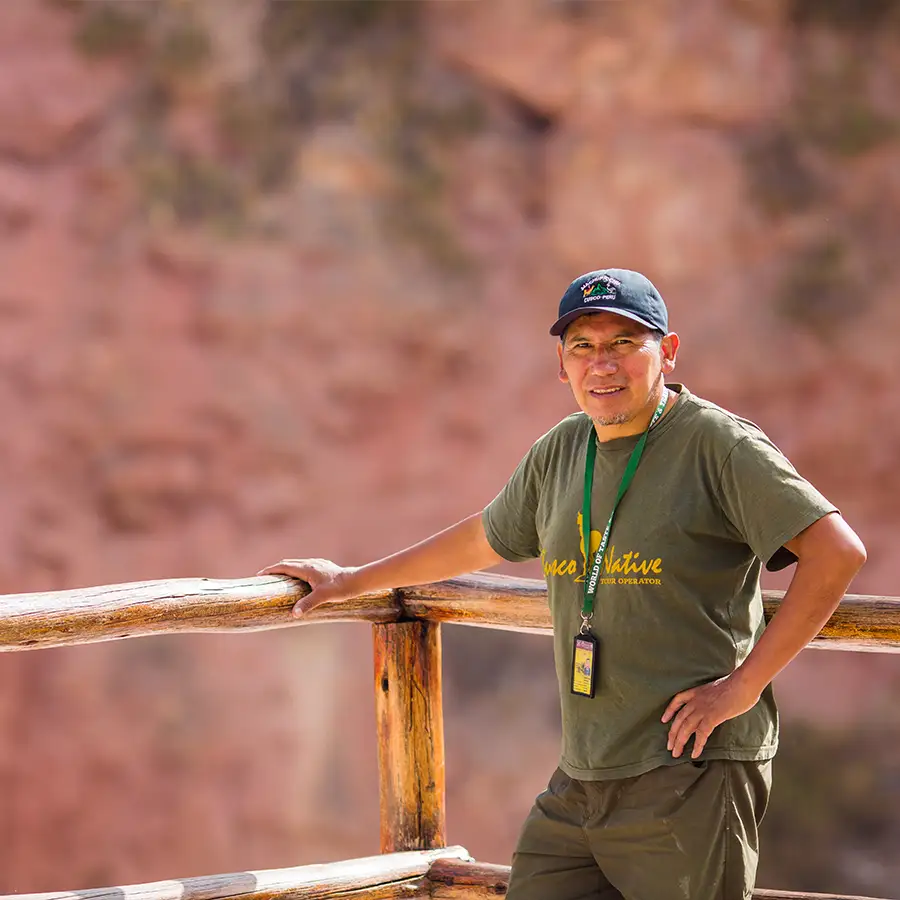
Cusco Native Tours is a sustainable and ethical tour operator founded in 2008 by Renato Auca Fuentes, a native cusqueño of Quechua origin. Our company offers unique and authentic tours and treks throughout Peru, showcasing the country’s rich history, vibrant culture, and stunning natural beauty.

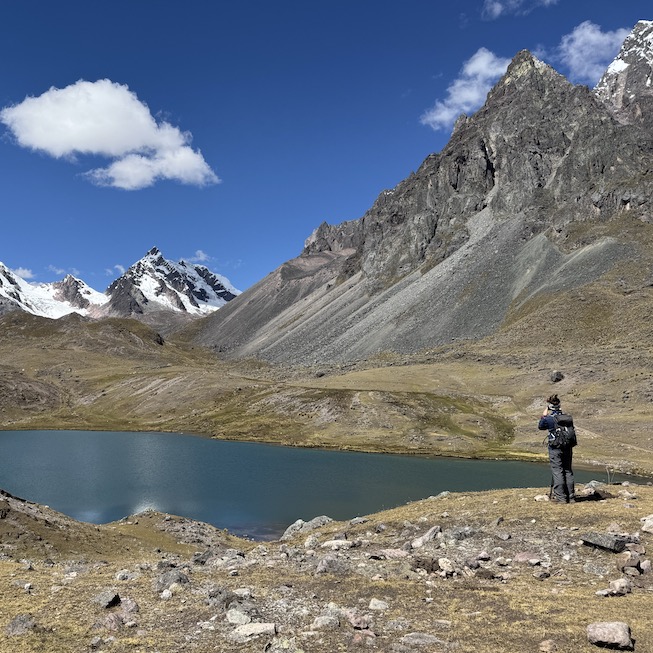





I don't think I have the words in my vocabulary to thank you enough for yesterday... it was AMAZING! I am in awe, speechless.
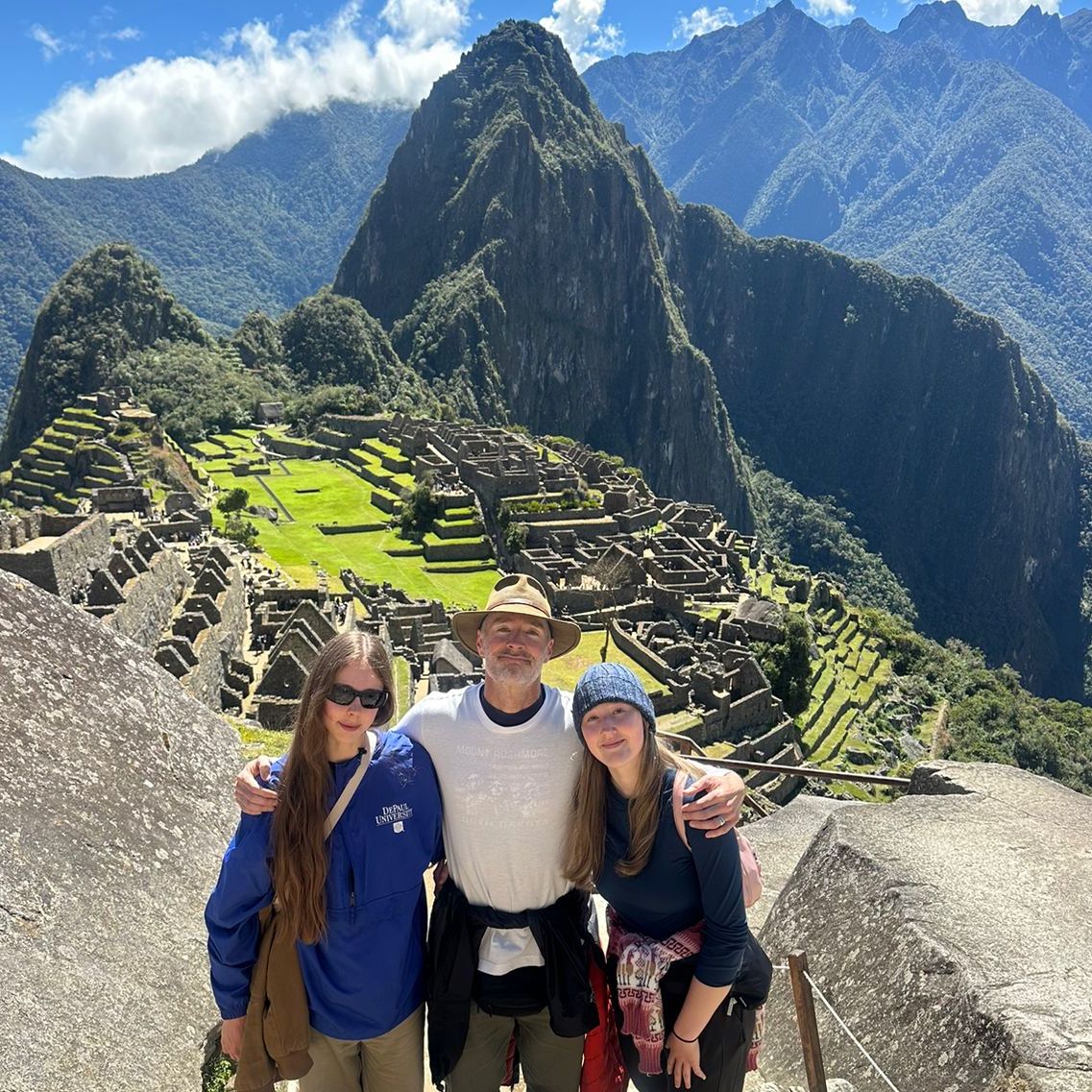





We did five Cusco Native Tours on our 9 day trip to Cusco recently and had the best vacation experience of my life! I'm so glad we went with Cusco Native.
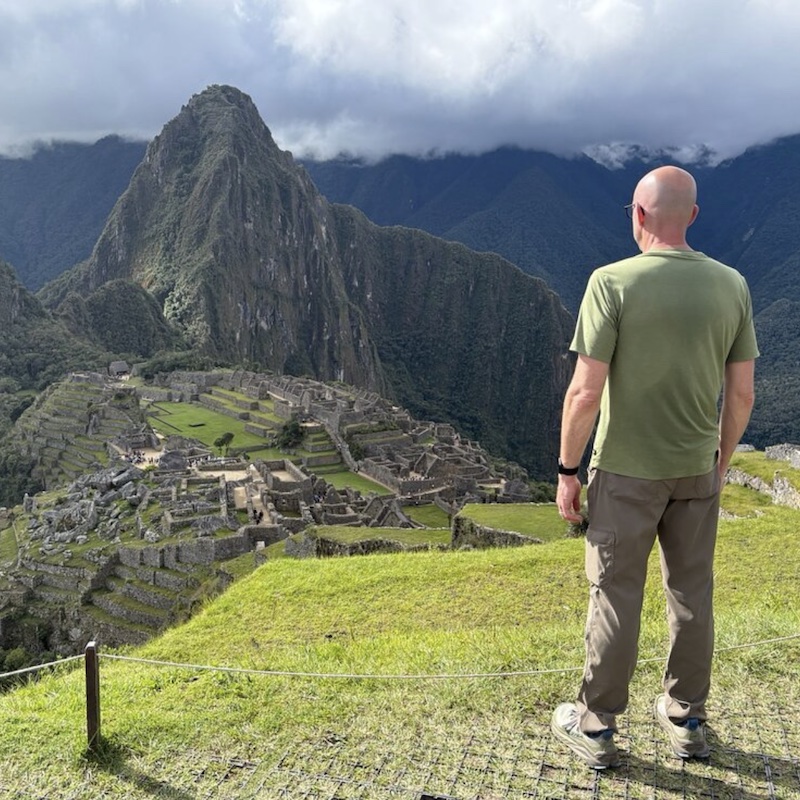





Machu Pichu has been #1 on my bucket list for over 30 years, and I am so glad I chose Cusco Native to make this dream come true.
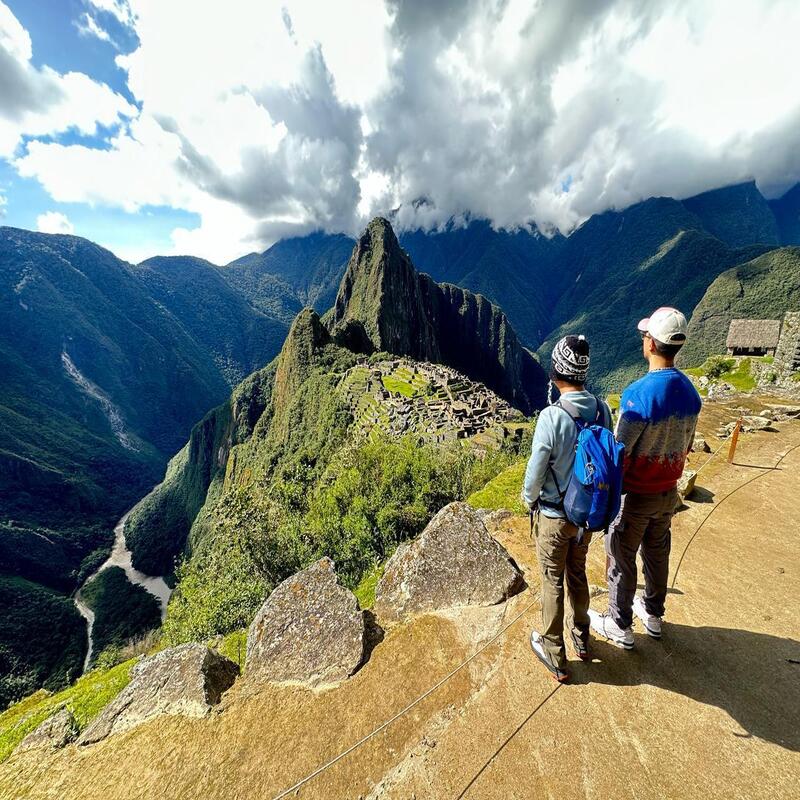





I am extremely satisfied with the experience. The communication was smooth and efficient. Rumi, our MP guide, is very knowledgeable and I highly recommend him. 5 stars!
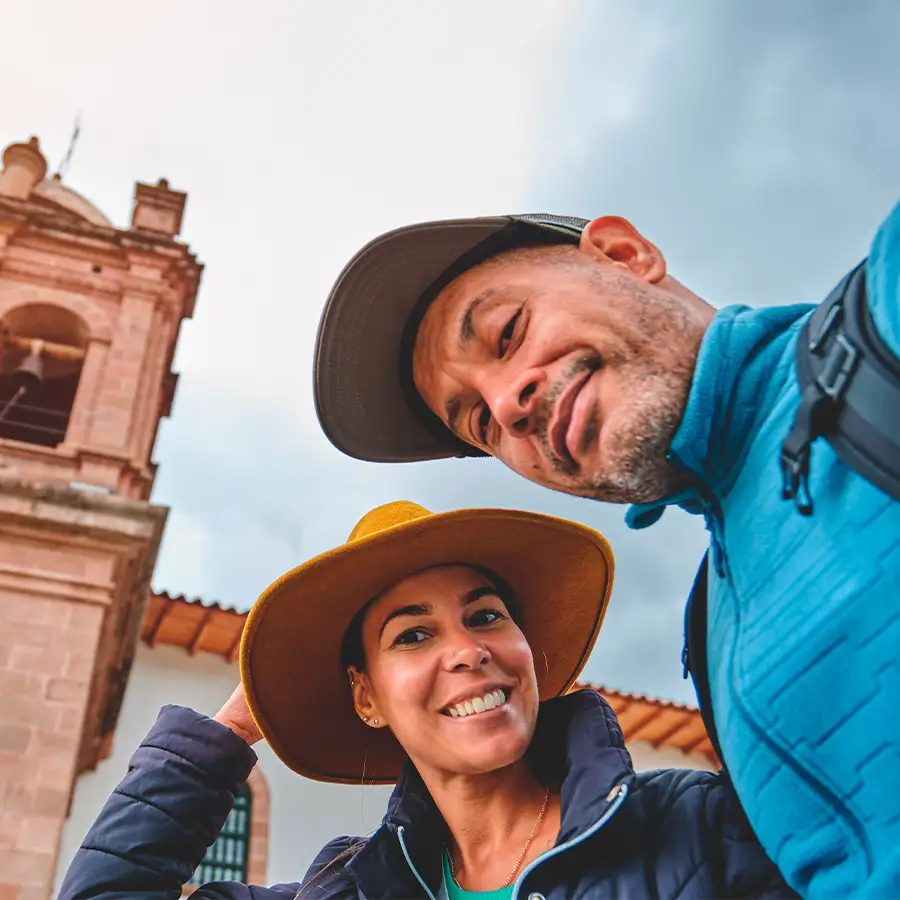
We are your local experts in Peru, specializing in tailor-made itineraries, 24/7 support, and exclusive insider access. By partnering with us, you can offer your clients unforgettable experiences that go beyond the ordinary. Let's connect and create extraordinary journeys together.

Personalized tours to Machu Picchu and other iconic destinations, handcrafted by passionate local experts.
2025 Cusco Native Tours. All rights reserved.